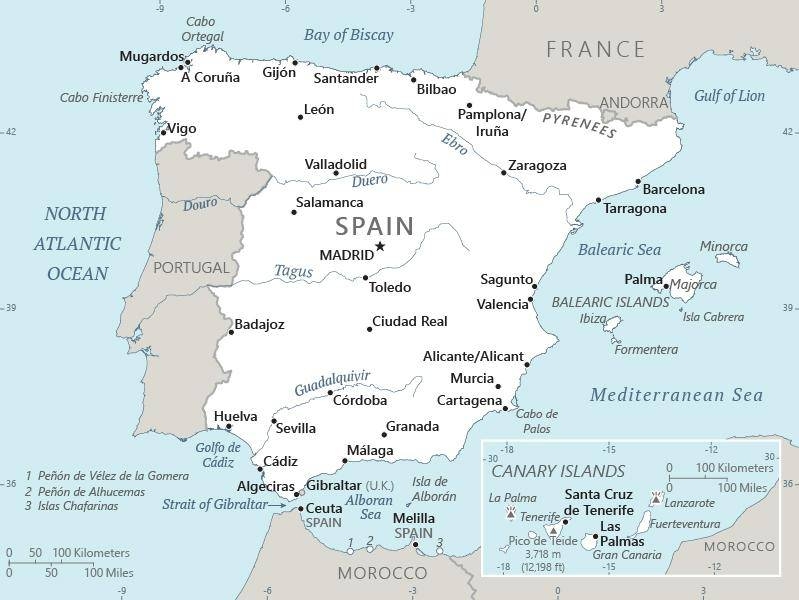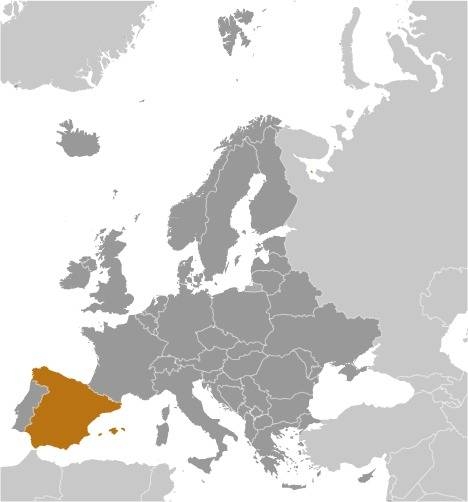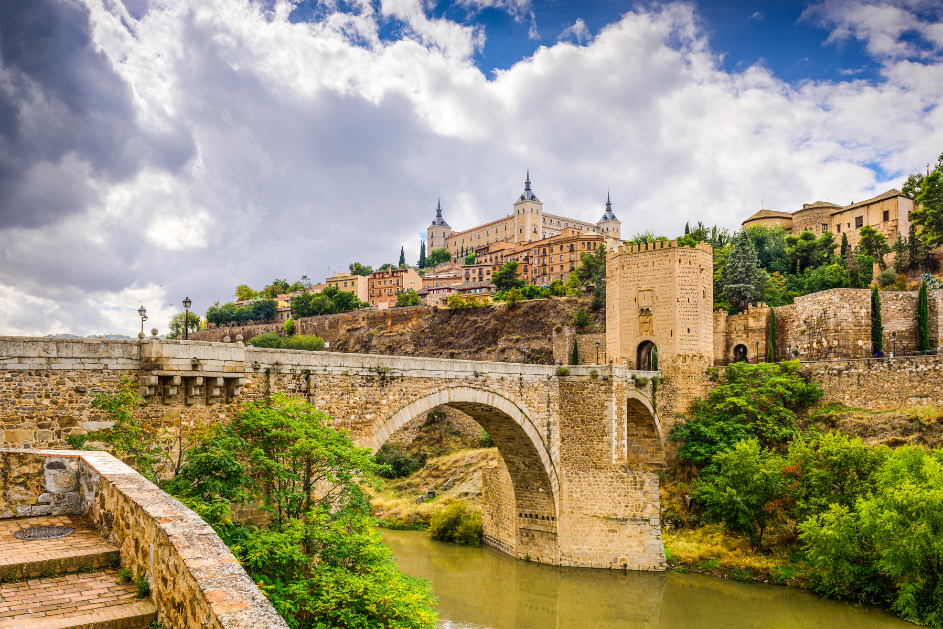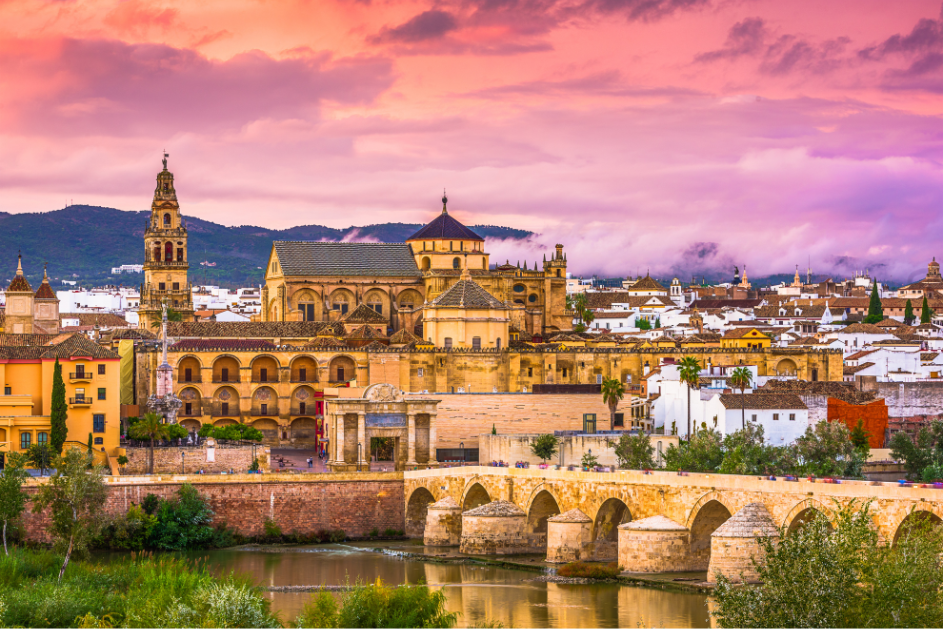This post may contain affiliate links. For full information, please see our disclaimer here and our Privacy Policy here.
Welcome to the Solo Female Travel Safety Tips and Advice page for Spain!
This page is brought to you by Solo Female Travelers Tours, our curated small group trips for women, by women.
On this page you will find first-hand, unbiased, and real safety tips, advice and reviews from women traveling solo, submitted directly from their personal experiences in the country.
Their opinions are unfiltered and submitted independently as part of the Solo Female Travel Safety Index, a ranking of 210 countries and regions based on how safe they are for women traveling solo.
The safety scores range from 1 to 4 with 1 being the safest and 4 being the most dangerous for solo female travelers.
You don’t need to login to read the below reviews. But do sign up or login to share your solo travel experiences, country safety rating and comments.
Jump straight to: Travel Tips | About the Index | Resources I Leave a Review
MAKE A DIFFERENCE – LEAVE YOUR SAFETY REVIEWS!
We can make the world a safer place for women traveling solo together. Sign up to our portal and leave your reviews NOW. Share your experience with other solo female travelers and help us empower more women through travel.
Spain Country data
We have compiled a few data points below that can help you better understand Spain and have more context when thinking about travel safety.
Official country name: Kingdom of Spain.
Etymology: Derivation of the name "Espana" is uncertain, but may come from the Phoenician term "span," related to the word "spy," meaning "to forge metals," so, "i-spn-ya" would mean "place where metals are forged". The ancient Phoenicians long exploited the Iberian Peninsula for its mineral wealth.
Country map

Locator map

Flag

Capital: Madrid.
Independence / foundation: The Iberian peninsula was characterized by a variety of independent kingdoms prior to the Muslim occupation that began in the early 8th century A.D. and lasted nearly seven centuries.
The Christian redoubts of the north began the reconquest almost immediately, culminating in the seizure of Granada in 1492, this event completed the unification of several kingdoms and is traditionally considered the forging of present-day Spain.
Population: 47 million.
Currency: Euro (EUR)
1 USD = 0.91 - 0.93
Time zone: UTC+1
Languages spoken: Castilian Spanish (official nationwide) 74%, Catalan (official in Catalonia, the Balearic Islands, and the Valencian Community (where it is known as Valencian)) 17%, Galician (official in Galicia) 7%, Basque (official in the Basque Country and in the Basque-speaking area of Navarre) 2%, Aranese (official in the northwest corner of Catalonia (Vall d'Aran) along with Catalan, <5,000 speakers). Note - Aragonese, Aranese Asturian, Basque, Calo, Catalan, Galician, and Valencian are recognized as regional languages under the European Charter for Regional or Minority Languages.
Religions: Roman Catholic 58%, atheist 16%, agnostic 11%, other 3%, non-believer 10%, unspecified 2%.
Climate: Temperate climate with clear, hot summers in the interior, more moderate and cloudy weather along coast, cloudy, cold winters in the interior and partly cloudy and cool along coast.
Real GDP (ppp – purchasing power parity): $1.9 trillion.
Real GDP per capita (ppp): $40,200.
Main airports: Barcelona International Airport, Adolfo Suárez Madrid–Barajas Airport, Málaga Airport, Palma De Mallorca Airport.
World heritage sites in Spain



There are over 1,100 world heritage sites spread across more than 165 countries. New ones are added every year, and some may be removed from the list for various reasons.
Number of UNESCO listed sites: 51.
Top world heritage sites:
- Alhambra, Generalife and Albayzín.- Granada, Historic City of Toledo.
- Palau de la Música Catalana and Hospital de Sant Pau, Barcelona.
- Works of Antoni Gaudi.
- Monastery and Site of the Escurial, Madrid.
- Historic Centre of Cordoba.
- Burgos Cathedral.
- Cave of Altamira and Paleolithic Cave Art of Northern Spain.
- Monuments of Oviedo and the Kingdom of the Asturias.
- Old Town of Ávila with its Extra-Muros Churches.
- Old Town of Segovia and its Aqueduct.
- Santiago de Compostela (Old Town).
- Historic City of Toledo.
- Garajonay National Park.
- Mudejar Architecture of Aragon.
- Old Town of Cáceres.
- Cathedral, Alcázar and Archivo de Indias in Seville.
- Old City of Salamanca.
- Poblet Monastery.
- Archaeological Ensemble of Mérida.
- Routes of Santiago de Compostela: Camino Francés and Routes of Northern Spain.
- Royal Monastery of Santa María de Guadalupe.
- Doñana National Park.
- La Lonja de la Seda de Valencia.
- Historic Walled Town of Cuenca.
- Las Médulas.
- San Millán Yuso and Suso Monasteries.
- Pyrénées - Mont Perdu.
- Prehistoric Rock Art Sites in the Côa Valley and Siega Verde.
- University and Historic Precinct of Alcalá de Henares.
- Rock Art of the Mediterranean Basin on the Iberian Peninsula.
- San Cristóbal de La Laguna.
- Ibiza, Biodiversity and Culture.
- Palmeral of Elche.
- Catalan Romanesque Churches of the Vall de Boí.
- Roman Walls of Lugo.
- Archaeological Site of Atapuerca.
- Archaeological Ensemble of Tarraco.
- Aranjuez Cultural Landscape.
- Renaissance Monumental Ensembles of Úbeda and Baeza.
- Vizcaya Bridge.
- Teide National Park.
- Ancient and Primeval Beech Forests of the Carpathians and Other Regions of Europe.
- Tower of Hercules.
- Cultural Landscape of the Serra de Tramuntana.
- Heritage of Mercury. Almadén and Idrija.
- Antequera Dolmens Site.
- Caliphate City of Medina Azahara.
- Risco Caido and the Sacred Mountains of Gran Canaria Cultural Landscape.
- Paseo del Prado and Buen Retiro, a landscape of Arts and Sciences.
- Prehistoric Sites of Talayotic Menorca.
Interesting facts about Spain



- Spain was the world's first global empire. They made their way through North, Central and South America and also held the Philippines for almost 400 years.
- Spanish is the second most spoken language in the world in terms of native speakers. But several other langages are official in the country.
- The first novel is attributed to a Spanish author. Don Quixote, written in 1605, is recognized as the first modern novel. It was written by the Spanish author Miguel de Cervantes.
- Spain is home to the oldest restaurant in the world Restaurante Botin located in Madrid, was founded in 1725.
Further reading: N/A.
Spain Travel tips
Socket type: C / F. Guide to socket types.
Weekend days: Saturday and Sunday.
Driving: Cars drive on the Right.
Local taxi apps: Cabify, Uber, Lyft, Taxi.eu, FreeNow.
Travel Guides: Lonely Planet.
Languages spoken: Castilian Spanish (official nationwide) 74%, Catalan (official in Catalonia, the Balearic Islands, and the Valencian Community (where it is known as Valencian)) 17%, Galician (official in Galicia) 7%, Basque (official in the Basque Country and in the Basque-speaking area of Navarre) 2%, Aranese (official in the northwest corner of Catalonia (Vall d'Aran) along with Catalan, <5,000 speakers). Note - Aragonese, Aranese Asturian, Basque, Calo, Catalan, Galician, and Valencian are recognized as regional languages under the European Charter for Regional or Minority Languages.
Basic words and phrases in the main language:
Hello: HolaPlease: Por favor
Thank you: Gracias
Help: Necesito ayuda
Learn more with our favorite learning app Mondly.
Find a hotel in Spain
Booking.comBook tours and activities:
More about Spain on Solo Female Travelers
- Barcelona & Costa Brava tour- Andalusia tour (join waitlist)
- The solo female travelers guide to Barcelona
- Barcelona & Costa Brava travel tips
- Barcelona summer packing list
Did you spot any errors? We do our best to keep this information updated and accurate, but things change. If you saw anything that is not right, let us know so we can fix it: [email protected].
About the Solo Female Travel Safety Index
Safety matters to solo female travelers, you told us so in our annual Solo Female Travel Survey, where year after year, women prove that this is their most important concern when traveling solo.
We wanted to do something about it, so we built these country-specific pages where you can find reviews and scores for 7 key variables affecting the safety of women traveling solo.
Variables
- Risk of scam
- Risk of theft
- Risk of harassment
- Attitudes towards women
- UK Travel Advisory
- US Travel advisory
- Global Peace Index (GPI)
Informing OSAC
The Solo Female Travel Safety Score is used by the Overseas Security Advisory Council for including safety concerns for women travelers in their country security reports; OSAC is a partnership between the U.S. Department of State and private-sector security community.

How to use the Safety Index
On this page, you will find the country score and the personal opinions on safety of other women traveling solo.
You can sort the comments by:
- The level of experience traveling solo of the reviewer (beginner = <5 trips solo, Intermediate = 5 to 10 trips solo, Experienced = >10 trips solo).
- The age of the traveler.
- Whether they are a visitor or local.
- The date they were posted.
The safety scores range from 1 to 4 with 1 being the safest and 4 being the most dangerous for solo female travelers.
Thus, the lower the score, the safer the country.
Looking for more safety resources?
This entire website is devoted to helping women travel solo. Check out the links below to learn more:
Solo Female Travel Stats: Results from the the largest, most comprehensive and only global research study on solo female travel trends, preferences and behaviors published.
Thanks to Jacobo Vilella for creating the Solo Female Travelers Safety Index ❤️





